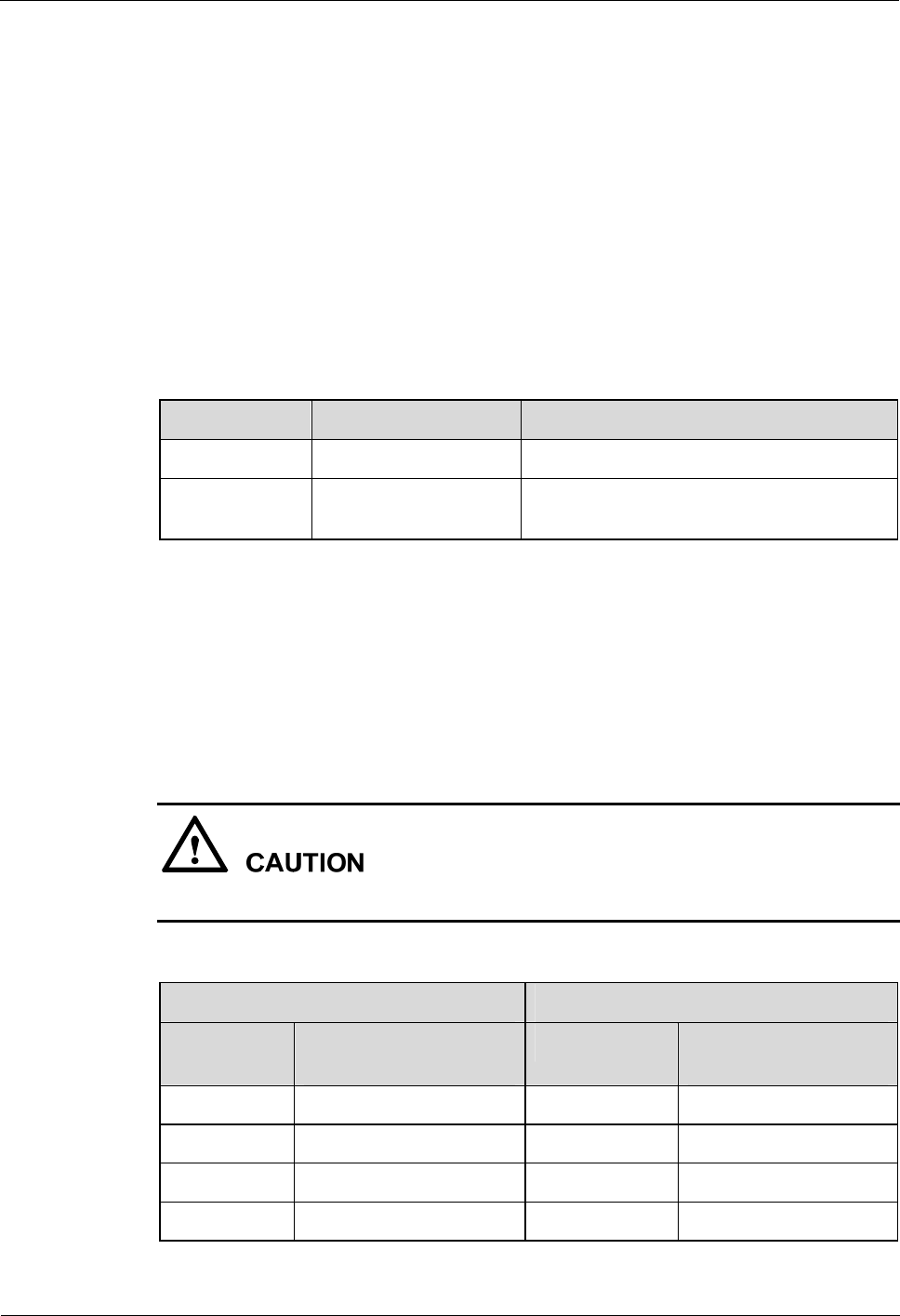
Nortel Secure Router 8012
Hardware Description 4 Boards
Issue 5.3 (6 April 2009) Nortel Networks Inc. 4-31
DTE and DCE
Generally, the 4SAE card is connected with a modem and serves as a dialing port. In this case,
you need to set the appropriate baud rate.
The synchronous serial port can work in either DTE mode or DCE mode. For two directly
connected devices, one device works in DTE mode and the other works in DCE mode . In this
case, the DCE device offers the synchronous clock and specifies the baud rate, while the DTE
device receives the synchronous clock and performs communication based on the specified
baud rate.
The router usually serves as a DTE device. For the type (DCE or DTE) of the device
connected with the router, refer to the manual accompanying the device.
Table 4-33 describes the specified device types.
Table 4-33 Typical DTE and DCE devices
Device type Interface type Typical device
DTE Pin (male) PC and router
DCE Hole (female) Modem, multiplexer, and Channel Service
Unit/Data Service Unit (CSU/DSU)
Synchronous interface rate and transmission distance
In different working modes, the synchronous serial port supports different electric signal
standards and baud rates. The configured baud rate and the selected cable determine the
maximum transmission distance of the signal. For the relationship between cable type, baud
rate, and maximum transmission distance of signals, see
Table 4-34.
If the V.24 cable is used, the serial interface baud rate cannot exceed 64 kbit/s.
Table 4-34 V.24/V.35 cable rate and transmission distance
V.24 V.35
Baud rate Maximum
transmission distance
Baud rate Maximum
transmission distance
2400 bit/s 60 m 2400 bit/s 1250 m
4800 bit/s 60 m 4800 bit/s 625 m
9600 bit/s 30 m 9600 bit/s 312 m
19200 bit/s 30 m 19 200 bit/s 156 m


















